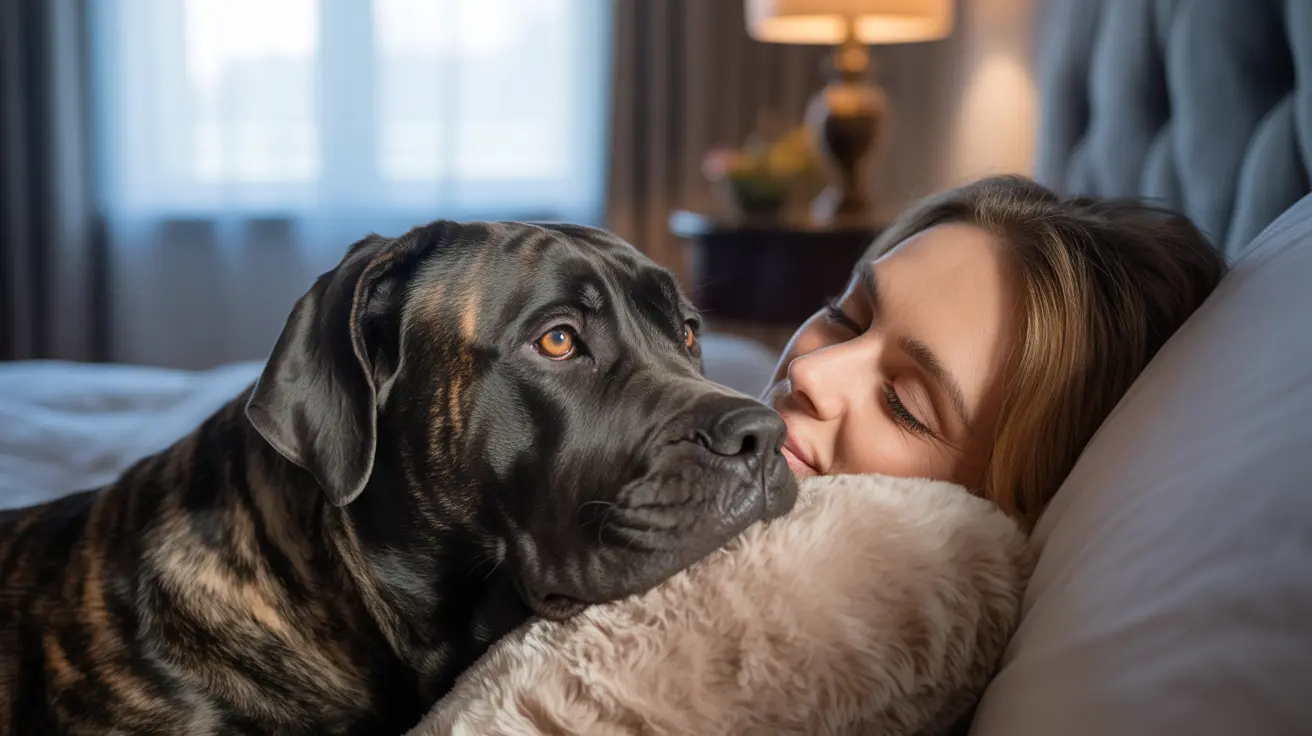If you've ever woken up to find your furry friend snoozing on top of your head, you're not alone. Many dog owners experience this peculiar yet endearing behavior, which can leave them wondering about their pet's nighttime preferences. Understanding why dogs choose to sleep on or near their owner's head involves a fascinating mix of instinct, emotion, and canine psychology.
This comprehensive guide explores the various reasons behind this behavior, from pack mentality to comfort-seeking, and helps you understand whether it's something to encourage or address. Let's dive into the science and psychology behind your dog's choice of sleeping spot.
The Pack Mentality: Why Your Dog Chooses Your Head
Dogs are inherently pack animals, and this ancestral instinct plays a significant role in their sleeping habits. In the wild, pack members sleep close to their leader for protection and social bonding. When your dog sleeps on your head, they're following this ancient instinct, viewing you as their pack leader.
Your head area also provides your dog with an optimal vantage point to monitor their surroundings while staying close to you. This position allows them to detect potential threats while remaining in physical contact with their trusted human companion.
Comfort and Security Factors
The area around your head offers several comfort benefits for your dog. Your pillow is soft and warm, and your head emanates heat, making it an attractive spot for temperature regulation. Additionally, your natural scent is strongest near your head, providing your dog with a sense of security and closeness.
Dogs may also choose this position because it's less likely to be disturbed by your movements during sleep, compared to sleeping at your feet or beside your body.
Emotional Bonds and Anxiety
Sometimes, dogs sleep on their owner's heads due to emotional needs or anxiety. This behavior can be more common in puppies adjusting to a new home or dogs experiencing separation anxiety. The close proximity helps them feel safe and connected to their primary caregiver.
While this behavior often stems from affection and trust, excessive clinginess might indicate underlying anxiety that needs addressing through proper training and behavior modification.
When Should You Be Concerned?
While sleeping on your head is generally harmless, it might become problematic if:
- It disrupts your sleep quality
- Your dog shows signs of severe separation anxiety
- The behavior is accompanied by other clingy or destructive actions
- It causes physical discomfort or allergic reactions
Training Alternative Sleeping Habits
If you'd prefer your dog to sleep elsewhere, consider these training approaches:
- Create an inviting sleeping area nearby with comfortable bedding
- Use positive reinforcement to encourage sleeping in their own space
- Gradually increase distance between their bed and your head
- Maintain consistent bedtime routines
- Consider crate training for a secure alternative sleeping space
Frequently Asked Questions
Why does my dog sleep on my head instead of the bed or floor?
Dogs often choose to sleep on heads due to a combination of instinct, comfort, and security. Your head area provides warmth, your familiar scent, and a strategic position for monitoring surroundings while staying close to their pack leader.
Is it normal for dogs to sleep by their owner's head due to separation anxiety?
Yes, it's common for dogs with separation anxiety to seek close proximity to their owners during sleep. However, if this behavior is excessive or accompanied by other anxiety symptoms, professional intervention may be necessary.
How can I encourage my dog to sleep on their own bed instead of my pillow?
Create a positive association with their bed through treats and praise, establish a consistent bedtime routine, and gradually transition them to their own sleeping space using positive reinforcement techniques.
What does it mean if my dog prefers sleeping near my head over other parts of the bed?
This preference often indicates a strong bond with you and a desire for security. The head area provides optimal warmth, familiar scents, and a good vantage point for protective instincts.
How can I address separation anxiety if my dog insists on sleeping on my head?
Address separation anxiety through gradual desensitization, creating a secure environment, establishing routine, and possibly consulting with a professional dog trainer or behaviorist. Consider anxiety-reducing techniques and products recommended by veterinarians.
Conclusion
While having your dog sleep on your head might seem unusual, it's typically a sign of trust, affection, and natural pack behavior. Understanding the reasons behind this habit can help you decide whether to accommodate or modify it. Remember that each dog is unique, and what works for one may not work for another. Focus on maintaining a healthy bond while ensuring both you and your pet get quality rest.






